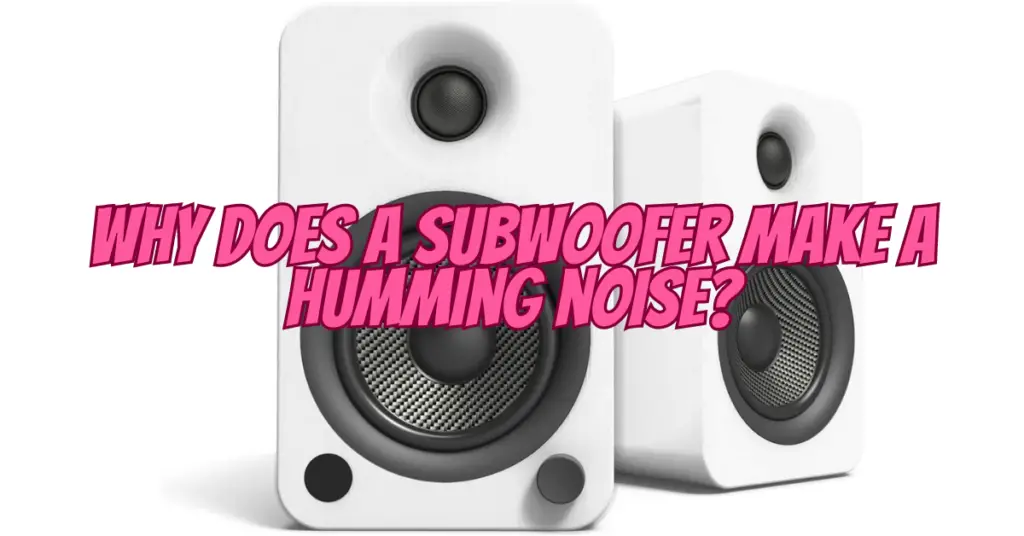Subwoofers are renowned for their ability to produce deep, powerful bass frequencies, adding a rich layer of audio depth to music and movies. However, sometimes they can create an unwelcome addition to the audio landscape: a humming noise. In this article, we will explore the reasons behind why subwoofers make humming noises and provide solutions to mitigate this issue and ensure an optimal listening experience.
1. Ground Loop Interference:
One common cause of humming noises in subwoofers is ground loop interference. This occurs when multiple devices in an audio system are grounded at different points, creating a voltage difference that results in unwanted hums. Subwoofers, connected to various audio equipment, can pick up these interference signals and produce humming noises.
Solution: To address ground loop interference, ensure that all audio components in your setup are connected to the same power outlet or power strip. Alternatively, ground loop isolators can be used between the subwoofer and the audio source to break the unwanted ground loop connection, eliminating the humming noise.
2. Inadequate Shielding and Cable Quality:
Low-quality or unshielded audio cables can pick up electromagnetic interference, leading to humming noises in subwoofers. Additionally, subwoofers themselves might lack proper internal shielding, making them susceptible to external electromagnetic signals.
Solution: Invest in high-quality, shielded audio cables to connect your subwoofer to the audio source. Ensure that the cables are not tangled with power cords or other electronic devices. If the subwoofer lacks internal shielding, consider relocating it to a position where it is not in proximity to other electronic devices that might emit electromagnetic signals.
3. Radio Frequency Interference (RFI):
Subwoofers can pick up radio frequency signals from nearby electronic devices or radio transmitters. These signals can be converted into audible humming noises, disrupting the audio output.
Solution: To combat RFI, relocate the subwoofer away from potential sources of radio frequency signals, such as Wi-Fi routers, cordless phones, or other wireless devices. Additionally, investing in a subwoofer with built-in RFI shielding can help minimize the impact of radio frequency interference.
4. Amplifier Issues:
Problems within the subwoofer’s internal amplifier, such as faulty components or improper grounding, can result in humming noises. This issue might require professional inspection and repair.
Solution: If you suspect an internal amplifier problem, contact the manufacturer’s customer support or consult a professional audio technician for diagnosis and repair. Attempting to repair the amplifier without the necessary expertise can cause further damage.
Conclusion
While the humming noises emitted by subwoofers can be frustrating, they are often the result of interference issues that can be addressed. By understanding the root causes, investing in high-quality cables, and considering the placement and shielding of the subwoofer, enthusiasts can enjoy distortion-free, deep bass without the unwanted accompaniment of humming noises. If problems persist, seeking assistance from audio professionals ensures that the subwoofer functions optimally, delivering the immersive audio experience it was designed for.


